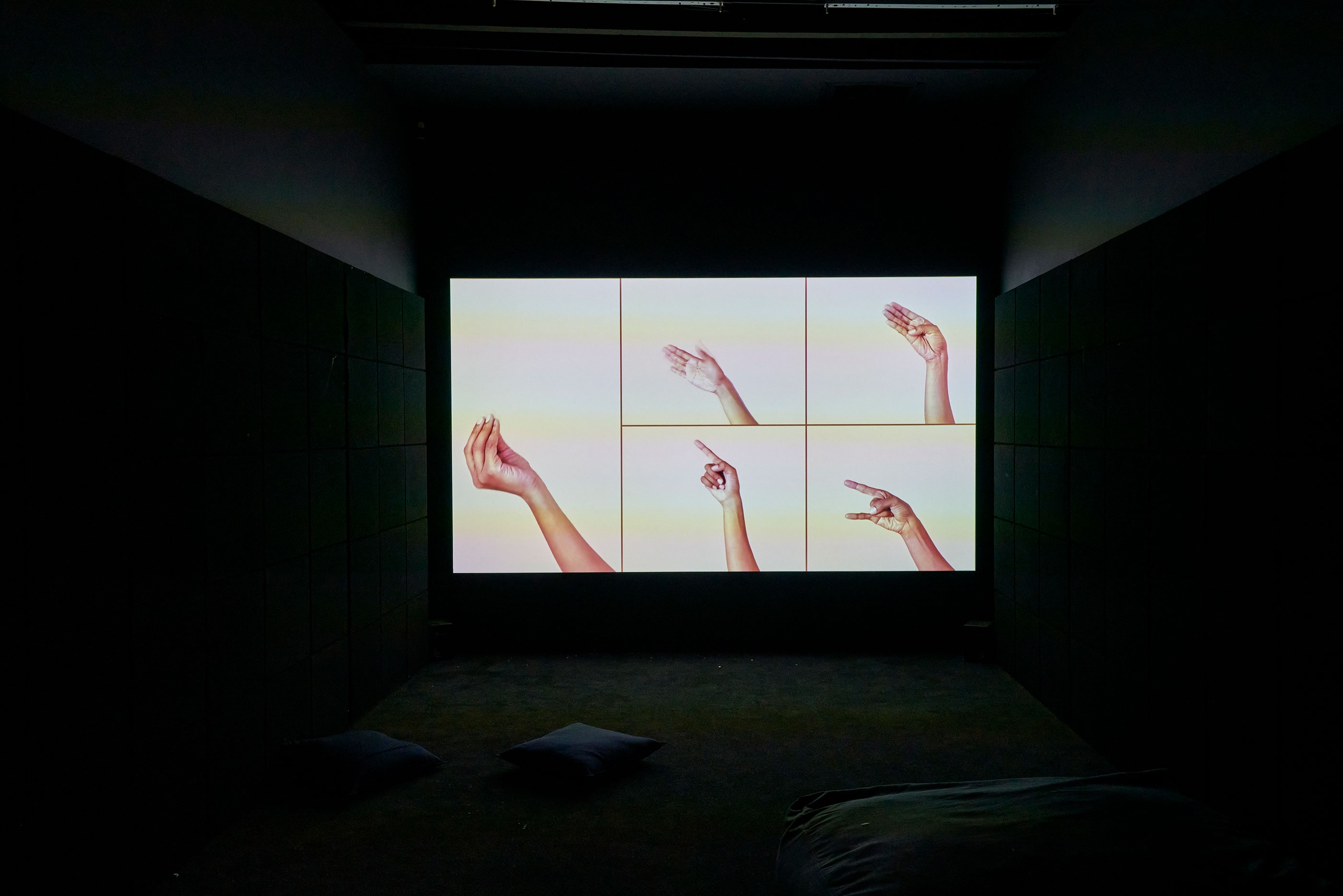Lerato Shadi

In Mabogo Dinku, Shadi extends reflections on legibility. Both the title of the work and the folk song she sings to accompany the video are rendered in only Setswana. A series of hand gestures – some commonplace, others enigmatic – play across the screen; a wave, a hand beckoning, a finger pointing, a palm raised, variations on the closed fist, a series of less familiar signs. As curator Winnie Sze writes, Shadi offers no “guidance on what the words and gestures mean because she is narrating the un-narratable, the history of her people, marginalised during apartheid South Africa. The history she was taught at school is the history of the coloniser, which she rejects, so what history can she tell?” Resisting translation into English, the artist centres her mother tongue (its words and its gestures), disregarding assumptions of transparency, access and explanation. In doing so, Shadi asks after the ways in which knowledge is particular to experience and perspective.
b.1979, Mahikeng
“My entire practice is a durational practice,” Lerato Shadi says of her embodied engagement with societal assumptions and mechanisms. In works that more often necessitate many hours of labour and a slow accumulation of actions, the artist performs symbolic strategies of resistance. Central to her preoccupations is “the idea that whenever there is oppression there is resistance, and meditating on that spirit.” To Shadi, opacity and interpretation offer a productive alternative to structural exclusion and cultural erasure, that marginalised histories and bodies might find a space to inhabit. Refusing translation and deferring easy explanation, she invites the audience to assume an attitude of unknowing, and pursue more oblique understandings beyond inherited Western doctrines.